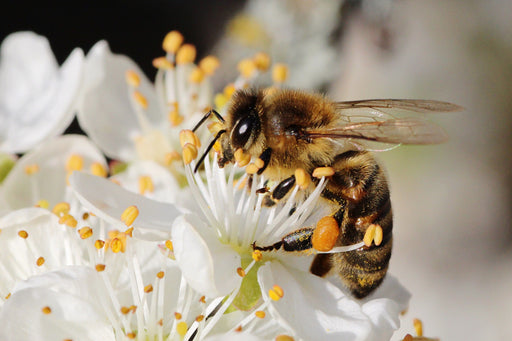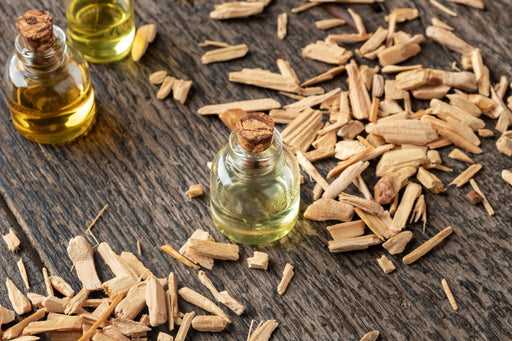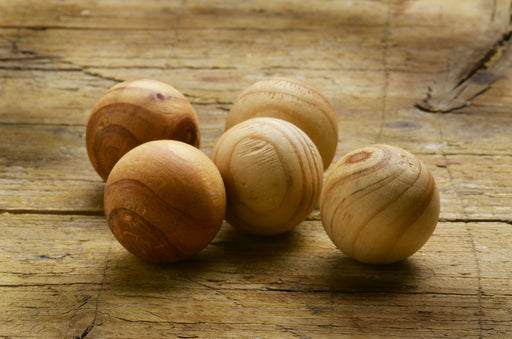What Are Mothballs Used For?

Whenever there is a moth problem, many proud homeowners start reaching for the camphor-scented mothball. Most people know the smell, even if they’ve never seen a mothball in action. But are mothballs really worthwhile? Are they going to repel moths and save your precious clothing? What will the mothballs actually do to the moths? These are common questions we’ve encountered with many customers with a desire to rid their homes of the pesky moth.
We’ve pulled together the key pieces of information we share with concerned customers tackling a moth problem for the first time who are considering using mothballs (the old-fashioned naphthalene type!)
What Are Mothballs?
Mothballs have been utilized for many years to keep moths and other fiber-eating pests away from clothing. Older mothballs used a chemical known as naphthalene, which was first registered in the US as a pesticide in 1948. Even today, there are some mothball products that incorporate naphthalene, but more contain para-dichlorobenzene. Both ingredients work similarly: they release vapors at room temperature.
So the first thing you’ll notice (aside from the barely pronounceable names!) is that mothballs typically contain chemicals.
In fact, it’s because of these chemicals that in the UK these products can’t actually be purchased. Yes - they’re that bad for your health!
In the USA you can find mothballs sold in a number of forms, including balls, blocks, flakes, crystals, and packets - containing some of these nasty chemicals.

If you prefer the notion of a chemical-free moth deterrent then look no further than Cedar Mothballs. Cedar has been used for many years as a safe and natural way to keep moths away from clothing. However Cedar Balls won’t kill moths, larvae or eggs so if they are not doing the trick you may want to use something stronger like the more modern Killer Cassettes and Papers but these are only available in the UK. These contain transfluthrin which is a safer alternative for mothballs used in the home but will definitely kill in a similar way to toxic mothballs.
Chemical mothballs will pretty much exterminate any insect that they come into contact with, which means they are a danger to bees, butterflies and countless other creatures you will want to keep from harm.
If you prefer to target your moth infestation in a more selective manner we can recommend Clothes Moth Traps for this purpose. These work by using a sticky strip insert made from powerful natural pheromones to attract the adult sexually active male moths and not only capture them but help break the breeding cycle too.
If you’re still committed to the idea of using mothballs, we’ve prepared a little guidance.

How Are Mothballs Meant to be Used?
The main purpose of chemical based mothballs is to kill adult clothes moths, their eggs, and the larvae that cause damage to your clothing. Mothballs are a pretty inexpensive method in comparison with professional pest control services, but using them incorrectly could mean expense - without a solution to your moth problem.
Guidelines for using the chemical based mothballs (available in the US) will vary by exact brand, but typically they’re placed inside drawers and in the bottom of your closet where the fumes can circulate.
Since old fashioned mothballs contain toxic ingredients, you will want to air out any clothing that was stored alongside them. That will eliminate any trace of the odor. Afterwards, be sure to wash the clothing as well.
Of course, chemical-free deterrents like cedar “mothballs” or “lavender scented mothballs" don’t come with a rigorous health and safety guide. But the usage instructions are typically quite similar, in that they need to be placed in your closets and drawers.
Typical Step by Step Chemical Mothball Instructions
Ok, so you get the big picture about using chemical based mothballs, but specifically what are the steps for using them?
Here is how you properly use mothballs:
- Take the clothing that you wish to protect from moths and place them in a garment bag, storage bin, or something else that is as close to airtight as you can get. Not only does this keep away adult flying moths, but it prevents the vapors from the mothballs from being overly diluted. You want the vapors as concentrated as possible to eradicate and kill moth eggs and larva.
- Handle mothballs with plastic or rubber gloves. Double check the packaging to see how many balls are needed. Place them in the container with your garments.
- Store your items for as long as you need to store them.
- When it is time to unpack your clothing, bring the container or garment bag to a ventilated area. It’s best if you can open the windows. Remove the clothing and air out the articles for a few days. Afterwards, wash before wearing.

How Do Mothballs Work?
In the case of chemical mothballs, they are designed to sublimate—turn to gas. During sublimation, the toxic fumes released can kill flying moths and moth larvae. The adult flying moths know better than to breathe in the fumes, so they’ll also steer clear of wherever the chemical mothballs are placed.
You’ll often find that the number of mothballs you need to use is specified in a cubic volume measurement, like “27 cubic feet” or “1 cubic meter”. This is because the mothball fumes will build up to sufficient potencies to be effective at killing moths and their larvae inside that volume of space.
Placing mothballs in the corner of your closet, with the doors shut provides the enclosed volume much smaller than simply placing the mothballs in the corner of your bedroom where fumes won’t reach toxic enough levels to be effective at killing the pesky pests!
Our recommended solution, which is much safer for everyone involved (except the moths!) would be Moth Traps which are are both chemical free and odorless. Or for larger infestations you may like to read our Clothes Moth Kit Guide which gives you guidance about using chemical products in line with our Traps.
Are Mothballs Pesticides?
Yes, chemical based mothballs available in the USA are pesticides. Because of that, they are regulated by the Environmental Protection Agency (EPA) in the US. They contain chemicals like para-dichlorobenzene and naphthalene, both of which are considered pesticides. When adult moths and other pests are exposed to mothball fumes, they will die.
Natural mothballs or scented mothballs on the other hand, more commonly available in the UK and other countries around the globe aren’t actually pesticides. In fact, these natural remedies are low impact to humans AND moths as they only attempt to deter moths - not kill them.
Now, a word of caution about chemical based mothballs. Naphthalene and para-dichlorobenzene have been anticipated as carcinogens by both the World Health Organization (WHO) and the US Department of Health and Human Services (DHHS). The International Agency for Research on Cancer (IARC), however, has named para-dichlorobenzene a definite carcinogen. Exposure from direct contact with your skin, inhalation, or ingestion can cause a slew of health problems in humans and animals. And if you can smell the mothballs, you’re inhaling the gas.
That is why chemical mothball use has diminished throughout the years and their sale has been prohibited in places like the UK.

Natural alternatives have arrived in the wake of the old fashioned mothball, but the leading solution today are sticky moth traps that use pheromones to attract adult male flying moths to take them out of the breeding cycle. This is proven to be an effective way to get a moth problem under control in combination with rigorous cleaning. Moth traps are also a great preventative measure for ongoing prevention of further infestations.
Can Mothballs Be Used as Repellents?
It’s a common belief that mothballs can be used both around the house and even outdoors to repel all sorts of pests. You might see articles online talking about alternative uses for mothballs, such as crushing them up and putting them in flower pots to ward off pests.
However, mothballs are not designed for use in this way.
Chemical mothballs aren’t effective at repelling larger animals, such as raccoons and snakes, from your home. In the USA, they also shouldn’t be used in any way other than described on the pack! This is because EPA regulations dictate that using mothballs in any other way as described on the packaging is illegal. Being environmentally conscious it’s also worth keeping in mind the soil and water near mothballs will be contaminated. Plants can be poisoned and die.
Of course natural or chemical free mothballs available outside the USA haven’t got such strict rules around them - equally, their effectiveness at repelling moths can be hit and miss, let alone other larger pests.
Are There Other Uses for Mothballs?
The answer to this is ‘No’!
Despite the numerous articles you’ll find on the internet, there aren’t really any uses for chemical or natural mothballs aside from their intended purpose - killing or repelling moths. Remember, no matter what you read, do not place chemical based moth balls around the perimeter of the house to ward away rabbits and squirrels. Do not crush them up and scatter them in soil. And no, you should never dissolve mothballs into water and rinse your clothing with it!

Mothballs and Their Uses
So, what are mothballs used for? Chemical mothballs can often be recommended off-label purposes, such as repelling snakes, squirrels, bats, and other animals, but these recommendations are typically unfounded and as you’ll have read, even illegal! Just in case you hadn’t picked up on it, these chemicals in chemical based mothballs are extremely hazardous.
Natural or scented mothballs available in the UK and other countries are exclusively targeted for use in repelling moths (not killing them). This makes chemical mothballs incomparable with more modern “natural” mothballs in every way. They don’t consist of the same ingredients and they don’t perform even the same purposes - one kills, the other attempts to repel.
If you’re looking for an effective solution to your moth problem, or to prevent ever having one, moth traps offer the benefit of being effective at trapping and killing moths, whilst having a high potency to attract only moths - leaving your closet odor free!
About MothPrevention
MothPrevention® speak to customers every day about their clothes moth issues - clothes moths are a species that are ever increasing and that can cause significant damage to clothes, carpets and other home textiles.
To date, we’ve helped over 250,000 customers deal with their moth problems. We have developed professional grade solutions including proprietary pheromones and trap design, not available from anybody else in the USA.





